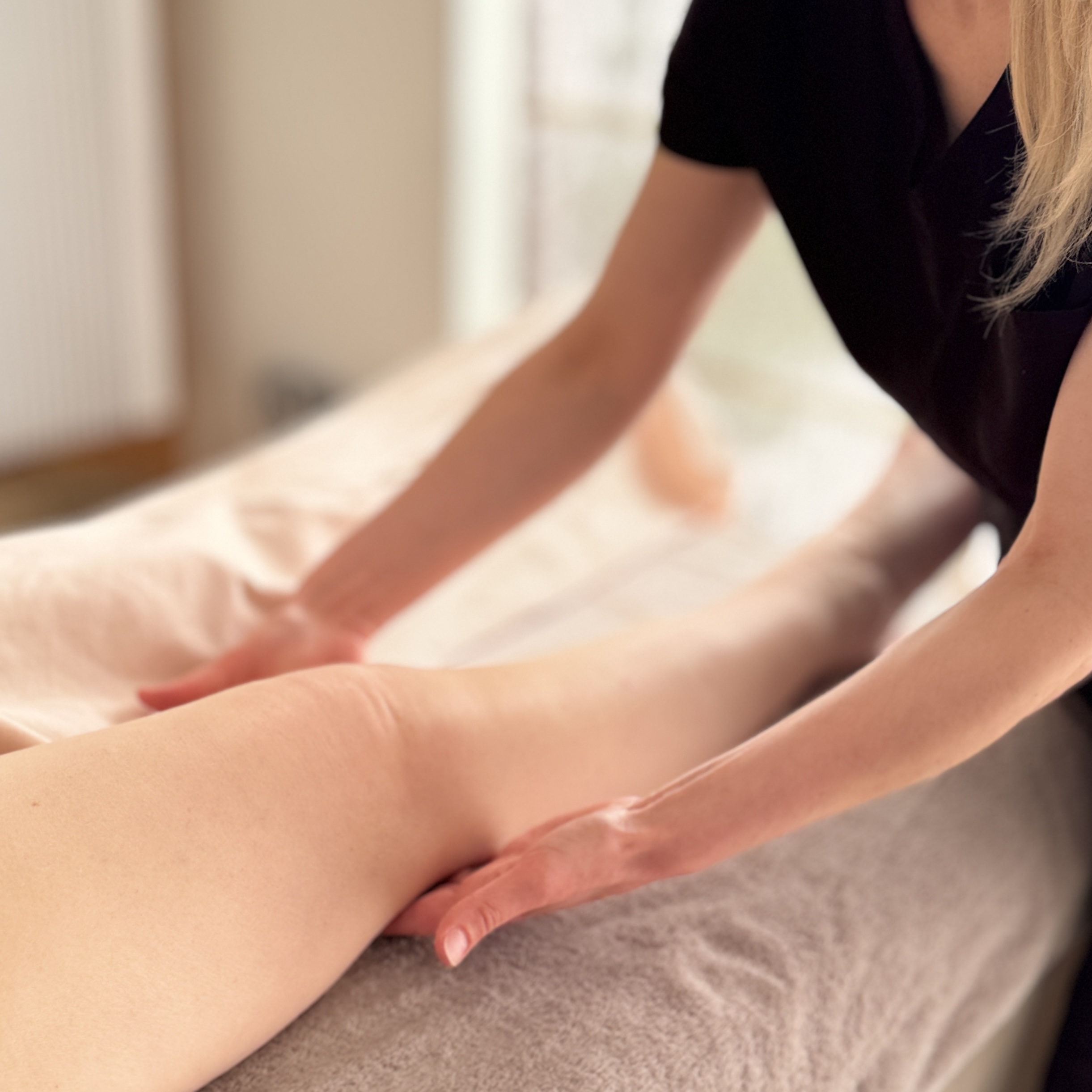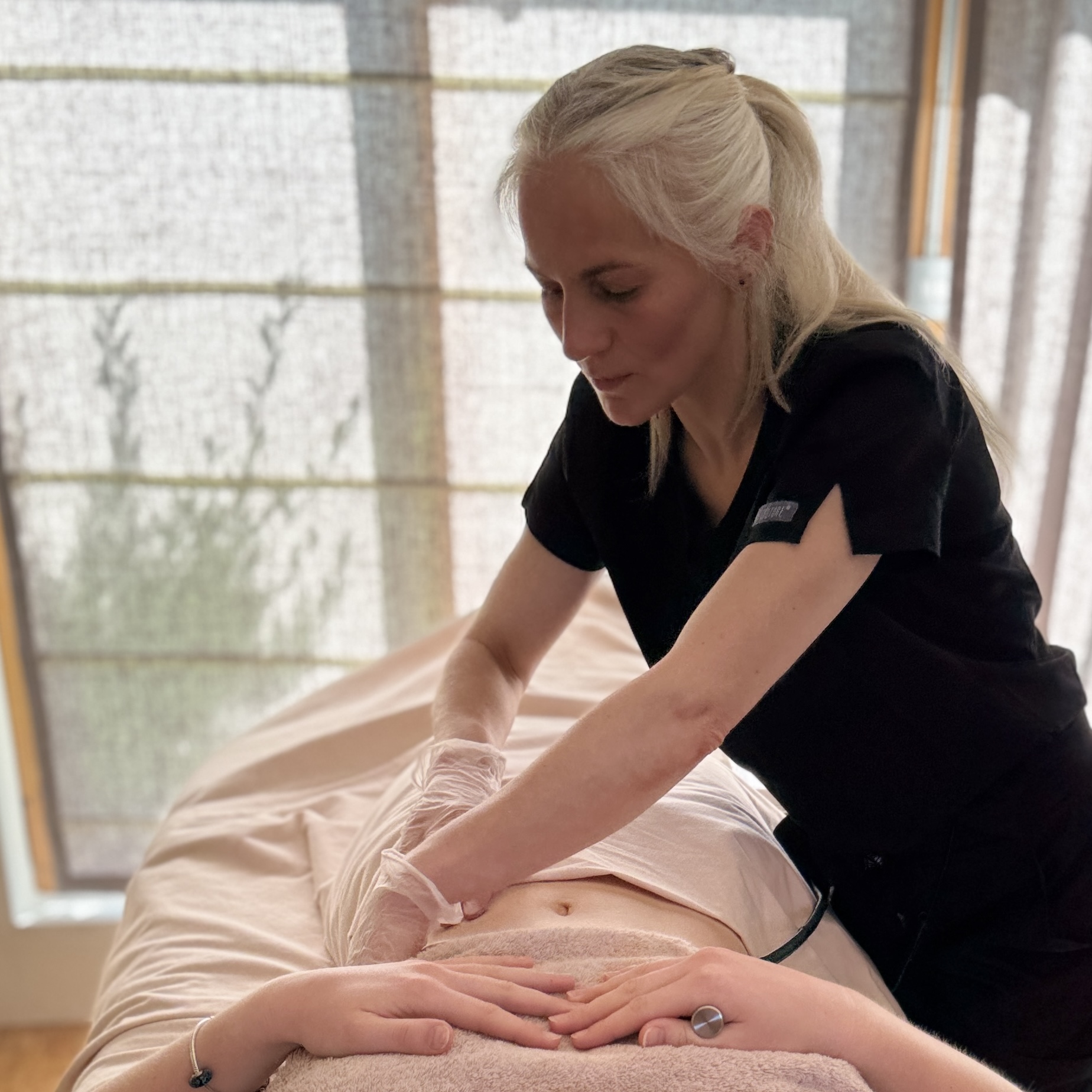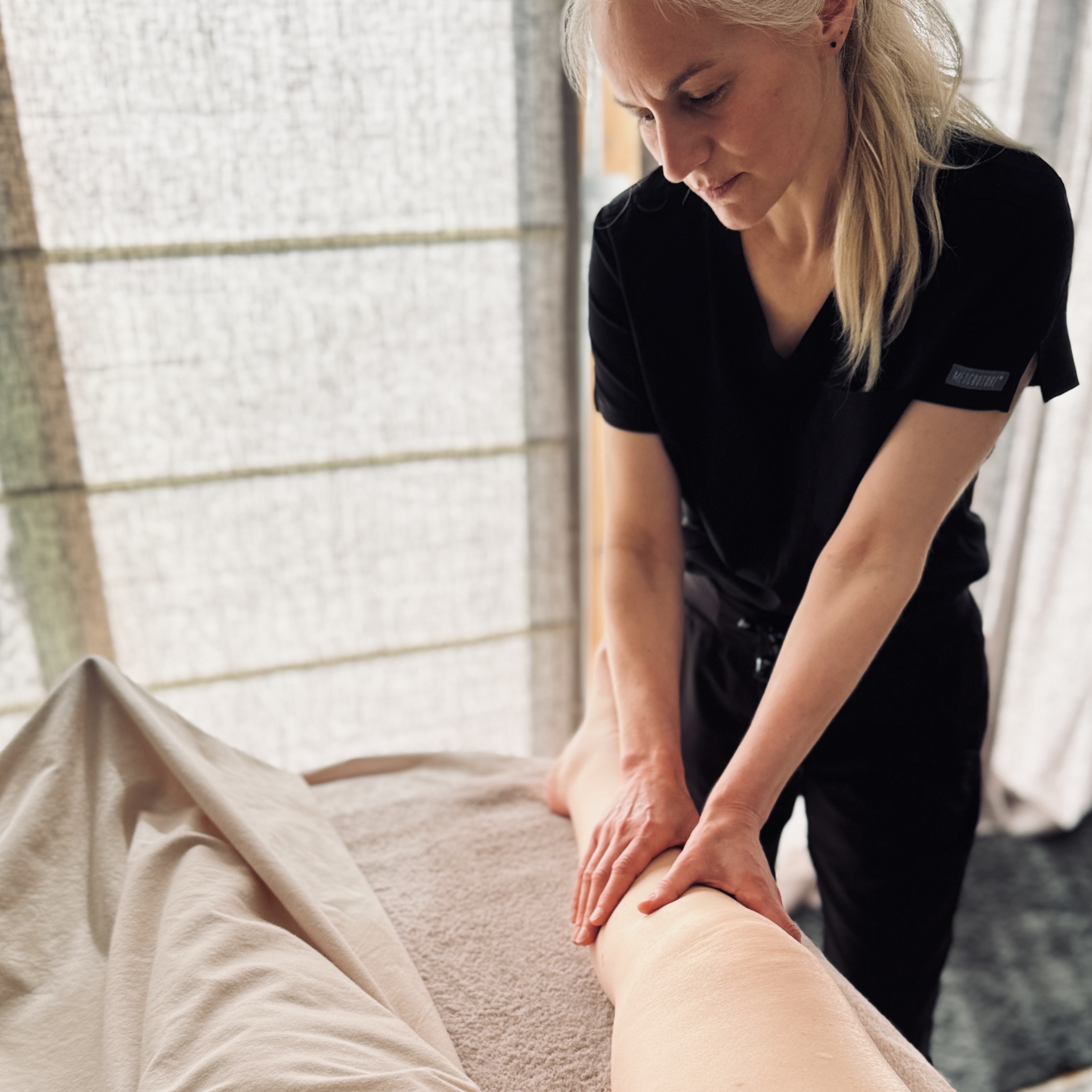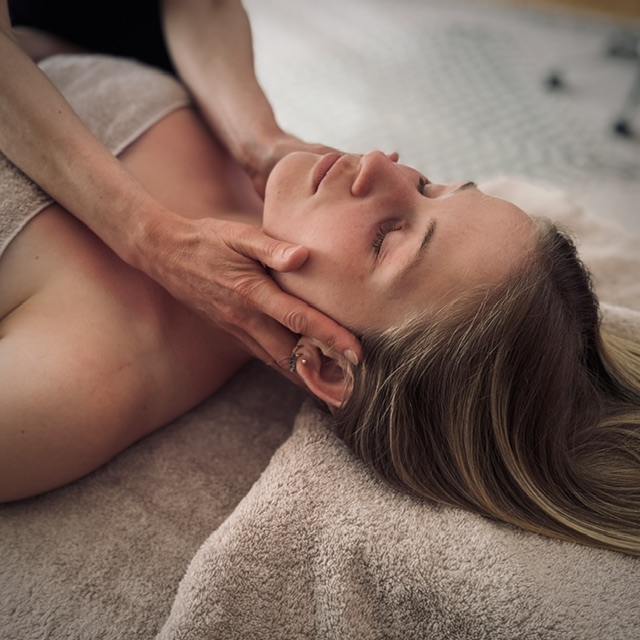


Manual lymphatic drainage (MLD) is a specialised form of therapy designed to promote the natural circulation of lymph through the body. It is particularly beneficial for reducing swelling, enhancing immune function, and promoting overall health.
Manual Lymphatic Drainage (MLD) is a gentle, non-invasive therapy that can be particularly beneficial during pregnancy to help reduce swelling, also known as oedema. The therapy can be safely tailored to the needs of pregnant women and can contribute to a healthier and more comfortable pregnancy experience. However, pregnancy is a contraindication for the use of Deep Oscillation Therapy (DOT).
You do not require a doctor’s referral to seek MLD treatment, but there are some medical conditions that may be contraindicated and require consent from your doctor to confirm if, and when treatment can begin.

The number of sessions required depends on the reason for seeking treatment. Generally, three sessions of MLD (Manual Lymphatic Drainage) close together are recommended initially, followed by a reduced frequency based on individual needs. For post-surgical care, MLD and DOT can begin a few days after surgery with your surgeon’s consent, typically involving 2–3 sessions per week for the first 2–3 weeks, then 1–2 sessions per week for another three weeks to support healing, reduce swelling, bruising, pain, and scar tissue. For Lymphoedema or Lipoedema, Combined Decongestive Therapy (CDT) starts with an initial assessment and a schedule for phase 1, usually 2–3 appointments per week for 2–3 weeks, followed by phase 2 maintenance with compression garments and MLD sessions at decreasing frequency—weekly, fortnightly, monthly, or every 6–12 months—depending on your needs.
MLD is not painful as it works by stimulating the lymphatic system through light, rhythmic hand movements that encourage the flow of lymph fluid.
Lingering swelling after surgery inhibits the healing process. The best way to reduce or remove this swelling and improve healing is by supporting the function of the lymphatic system by performing Manual Lymphatic Drainage and Deep Oscillation Therapy.

There are conditions that both MLD/DOT and CDT are not suitable for which is why it is important to complete a medical intake form and discuss any health changes during treatment with your therapist.
It is still unclear why some people develop lymphoedema after surgery or cancer treatment while others do not, but factors such as trauma, lymph node removal, radiotherapy, and chemotherapy increase the risk. Although there are no guaranteed preventative measures, the risk and potential complications can be reduced through regular gentle exercise (like swimming, walking, or yoga), a healthy lifestyle, and good skin care using non-perfumed moisturisers to prevent cracks and infection. It's important to take precautions such as avoiding cuts when trimming nails, protecting the skin during gardening, using insect repellent and sun protection, and keeping wounds clean and treated. Blood pressure readings and injections should be avoided in the at-risk limb, and compression garments may be helpful during flights. Restrictive clothing, excessive heat, and overexertion of the affected limb should also be avoided. Since a compromised lymphatic system weakens the immune response, even minor skin injuries can lead to cellulitis. Preventing skin damage and seeking prompt medical attention for signs of infection can help reduce this risk.
Yes — we offer multi-session discounts, such as 6 sessions for the price of 5. Ask about options when booking.
Whether you're managing a health condition, recovering from surgery, or simply seeking a space to feel better in your body, Lorna is here to help. Get in touch today to book your free 15-minute introductory call and discover how Manual Lymphatic Drainage can support your wellbeing. Your journey to feeling lighter, clearer, and more balanced starts here.
Get In Touch